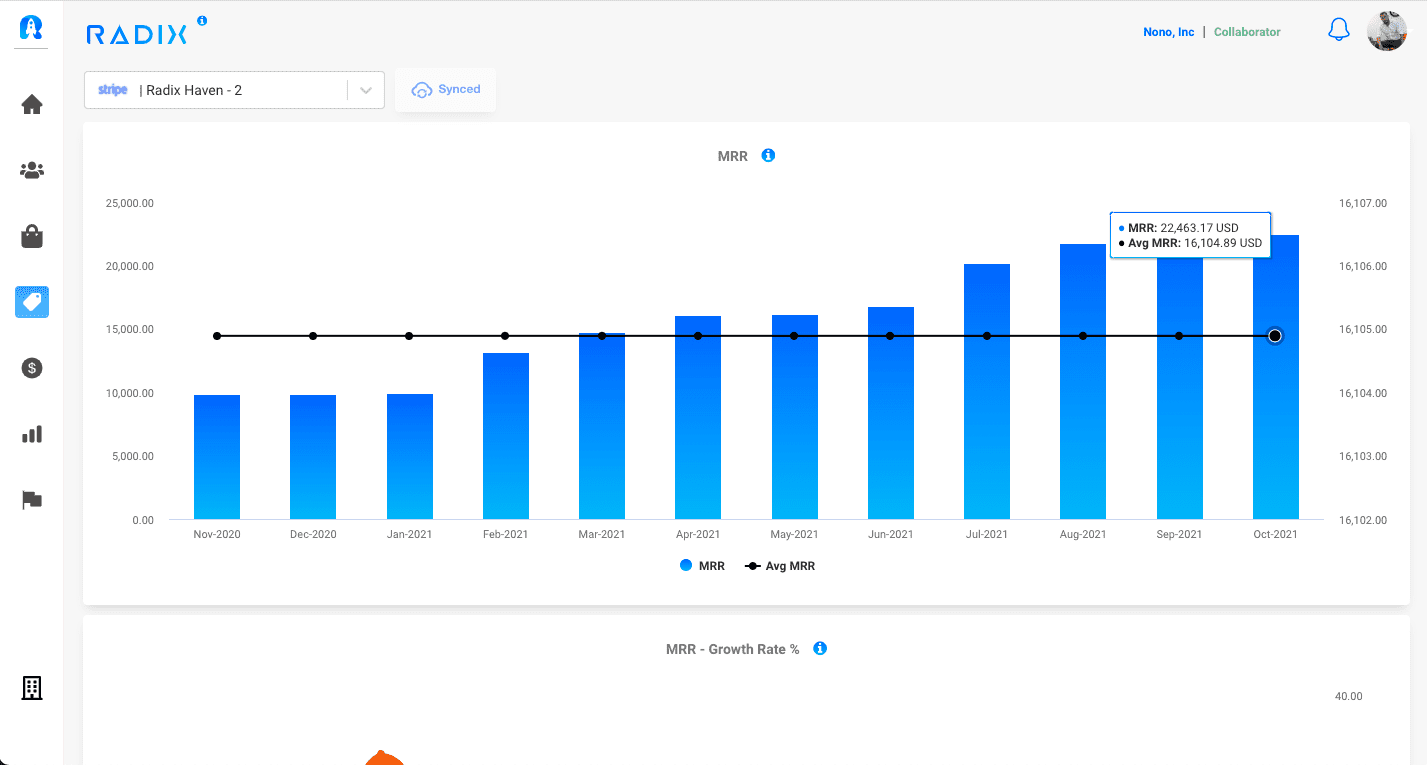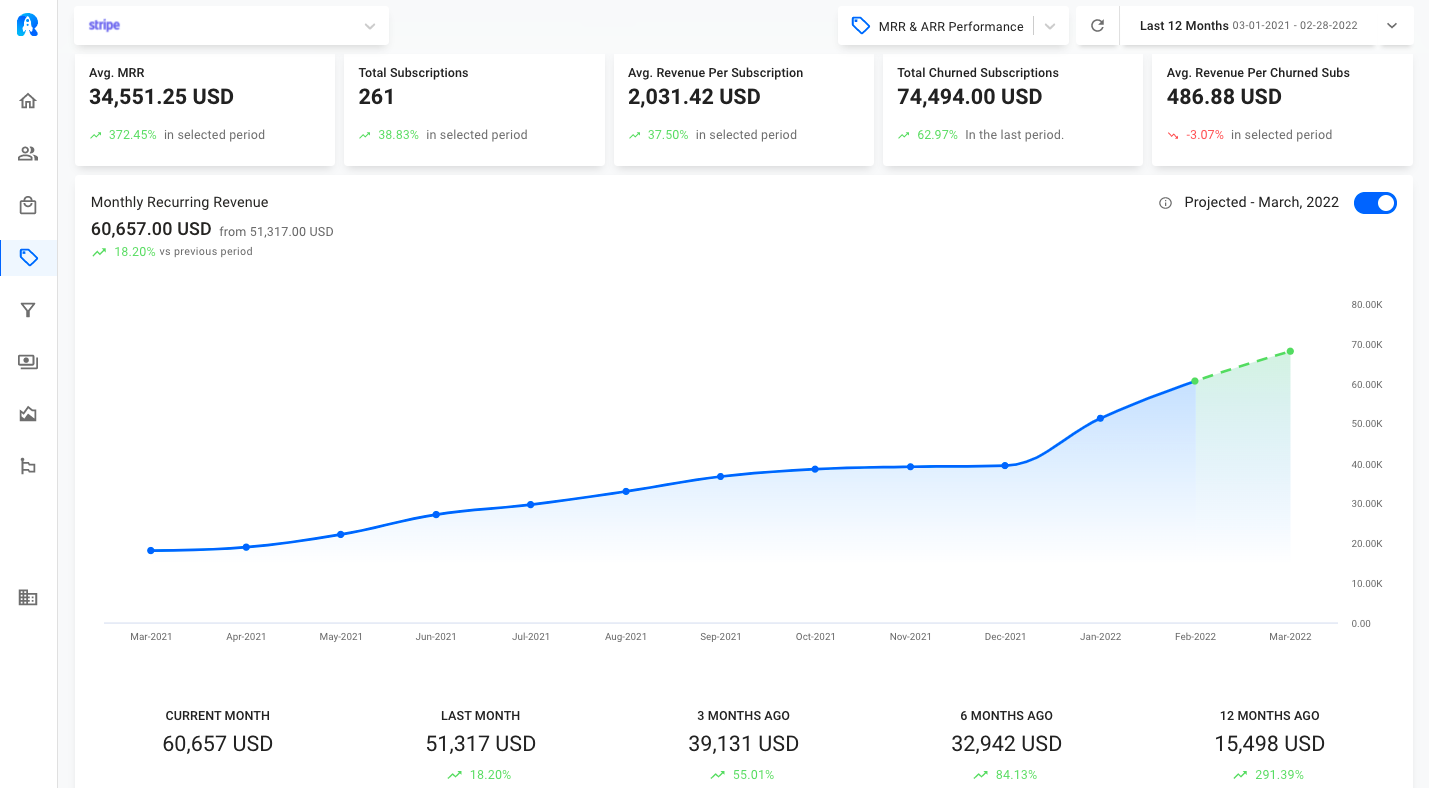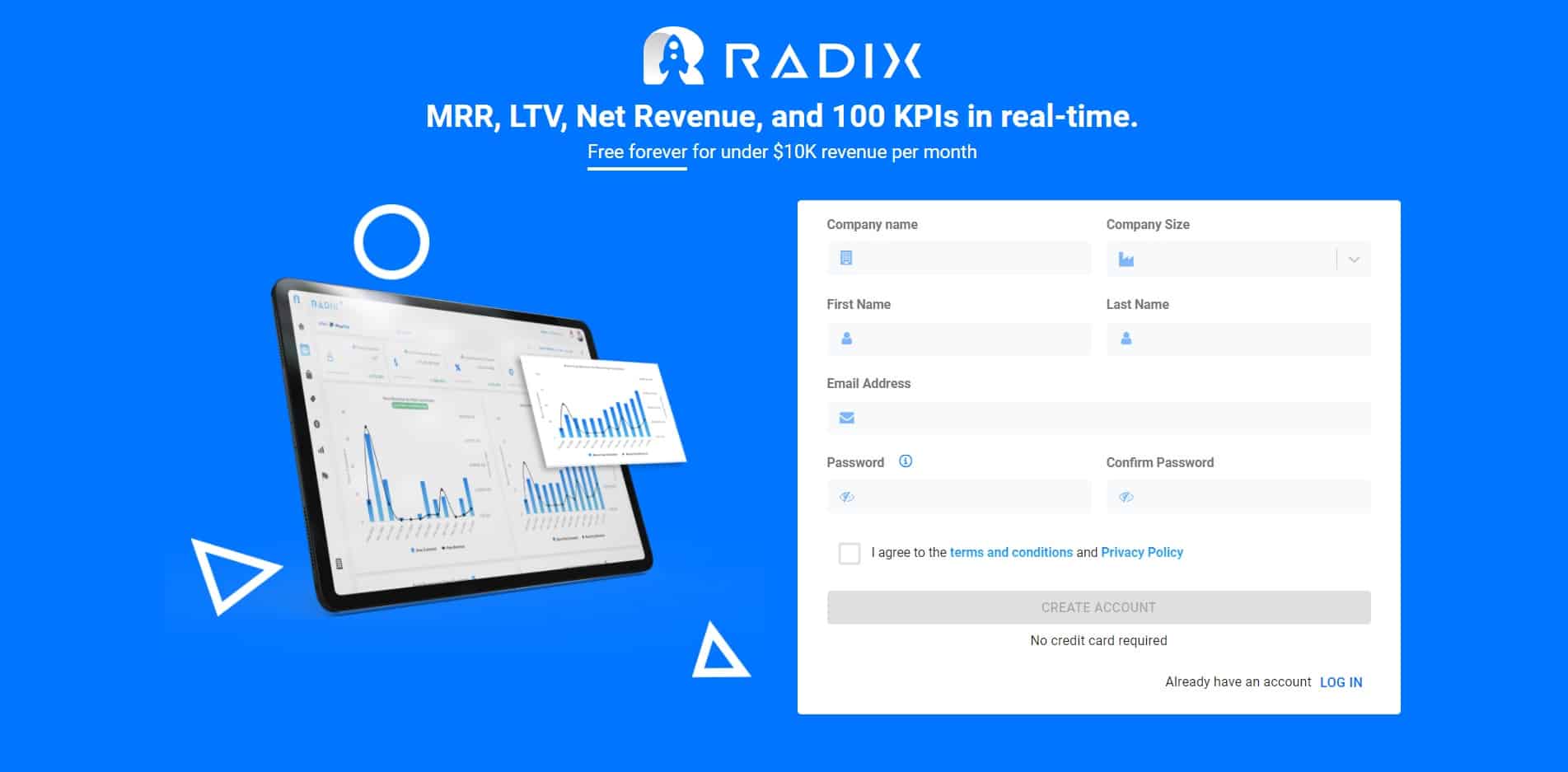Understanding MRR metric is key when managing a SaaS business.
Every day, your monthly recurring revenue (MRR) fluctuates. It’s because of all the underlying dynamics of people joining, upgrading, canceling, or downgrading.
Understanding and staying on top of all of these MRR metrics can be difficult at times. To simplify things, consider your MRR metrics to have essentially two factors:
- MRR Added – This is the revenue that your company added within a specific period.
- MRR Lost – This is the revenue that your company lost.
If you want to grow your company, you must add more MRR than you lose.

MRR Metrics
Let’s take a closer look at how your SaaS company gains or loses MRR. And how those modifications are classified as MRR metrics.
MRR may be added to your business by doing the following:
- Attracting new customers – this is known as a New Business MRR in SaaS language.
- Expansion MRR occurs when current customers pay more.
- Retaining former customers — Reactivation MRR
Furthermore, you can lose MRR if:
- Customers cancel— Churn
- Existing customers begin to pay less – Contraction
So that’s how you lose or gain MRR in your company.

How to Calculate MRR Metric
Here below you can find a better explanation to understand the MRR Metric concept:
- Let’s say you run a small SaaS called Radix and you want to find out your MRR month over month. The first step is to get the total number of subscriptions collected during the month (from start to finish) and then multiply that amount by the average subscription price.
- MRR = Total Subscriptions x Avg. Subscription Price
- Calculating your growth rate percentage will help you establish your trend. Growth Rate % is calculated based on your monthly MRR variance.
- MRR – Growth Rate % = ( Current Month MRR / Previous Month MRR ) -1
- After calculating your MRR, you can also calculate your Annual Recurring Revenue (ARR), which is simply a projection of how much revenue your business will generate during the running year based on the current month’s MRR.
- ARR = Current Month MRR x 12
As you can see in the table below, the MRR Growth Rate % from October to November was 5.88%, which equates to an increase of $2,691.This increase is due to new subscriptions or upgrades during that month.
- MRR Growth Rate % from November to December is – 22.84%, and you can see the percentage is negative, meaning that there was no growth during December, the MRR actually decreased by $2,691.

How to Optimize MRR Metric?
- Increase your subscription priceby adding more value to your product/service. Do not charge more without properly researching your customers’ opinion.
- Upgrade current subscriptions by restructuring your product/service features in different pricing plans.
- Win Back churned customersby sending special offers with full access to your product/service at a lower price. Make sure you solve the problem efficiently so you don’t experience a second churn from those customers.

How to track MRR Metric with Radix
- Sign up for free
- Connect your Stripe and PayPal accounts in less than five minutes.
- Get access to more than 100 KPIs and 20 smart notifications.
- Get your MRR/ARR/MRR Growth Retention % on the go by downloading our mobile app (App Store& Google Play)

Create a Free Account, and Start Tracking & Analyzing your business MRR

Read More:
Growth Hacking: 7 tips for SaaS Business to Scale Up
ARR: What is Annual Recurring Revenue?
Improve MRR Performance:10 Tips for Improving Your MRR for Better Business Growth





